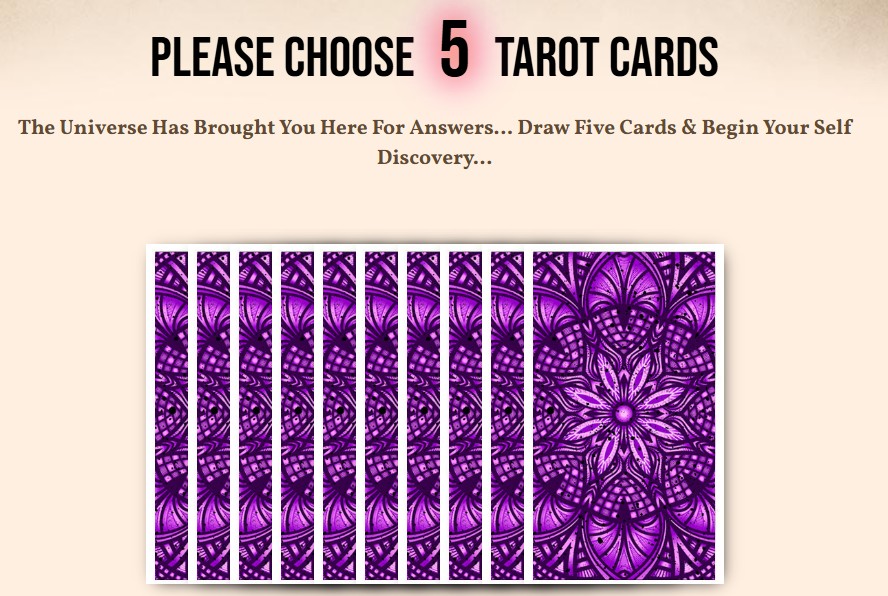Taurus horoscope today September 6, 2025 gives clear guidance for job, career, money, and health. Take patient steps, trim costs, nourish energy, honor goals.
Welcome, Taurus. For Taurus horoscope today October 6, 2025, the sky feels steady and kind, like a bull moving with purpose under Venus’s soft light. You get clear cues for work, money, and well-being. These insights can guide smart choices, so you move with calm and confidence.
Career asks for steady steps, not leaps. A patient tone, clear limits, and clean follow-through help you stand out. Job talks go better when you listen first, then speak to the point. Small wins add up, so treat each task like it matters.
Money favors practical moves. Trim a fee, renegotiate a rate, or hold off on a shiny buy. If you map your costs, you spot one quick fix that saves real cash. Keep receipts close, keep goals closer.
Health rewards simple care. Good sleep, warm meals, and a short walk keep your energy even. Stretch tight spots in your neck and back, and drink more water than you think you need. Your body responds fast to gentle routine.
Relationships at work and at home benefit from warm, plain words. Praise good effort, ask for what you need, and keep promises. If a plan shifts, adjust without fuss and protect your time.
If you followed Taurus horoscope today September 6, 2025, you will see the thread continues, steady and sure. Today brings a calm push forward, with Venus offering grace while you handle the details. Stay grounded, choose with care, and let consistent effort carry you.
Taurus Job and Career Horoscope for October 6, 2025
Today favors steady action and clear talk. You do best when you prepare, keep a calm pace, and speak with purpose. Expect useful feedback, a chance to show skill, and a moment to claim credit you have earned. This aligns with the tone in Taurus horoscope today September 6, 2025, where small, focused steps move you forward.
Opportunities to Shine at Work
A key window opens in a mid-morning meeting. Your numbers, plan notes, or client insight can set the tone for the next phase. Step in with a brief summary, then offer one sharp recommendation. Keep it crisp. A manager takes note when you tie facts to outcomes.
New tasks today will stretch your skills in a good way. Think training a new hire, drafting a quick process guide, or taking a tough client call. Each move builds your authority.
- Pitch a fix: Share a two-step solution for a known bottleneck. Short, clear, and easy to test.
- Lead a small win: Volunteer to coordinate a handoff across teams. Keep owners, dates, and risks tight.
- Show your prep: Bring a one-page brief to the check-in. Bullets beat long slides.
Collaboration pays off. Pair with a coworker who complements your style. For example, you handle structure, they drive outreach. Together you hit a team goal early, and you both look stronger. Speak up with a calm voice and a firm point of view. Your grounded tone sells the idea.
Navigating Career Challenges Today
Minor delays may pop up. A file syncs slow. A key reply lands late. Do not push or rush. Breathe, reset your plan, and work the next clear task.
Stubborn colleagues might dig in on a small detail. Keep your cool. Use facts, not volume. Ask for the requirement, show the data, and suggest one test. This shifts the talk from opinion to proof.
Try these quick moves when pressure builds:
- Take three deep breaths, then state the goal in one line.
- Break the task into two or three pieces and start with the easiest.
- Time-box a debate to ten minutes, then decide or escalate.
- Write a clean recap after meetings with owners and dates in bold.
Keep your standards, and protect your timeline. If scope creeps, say what fits today and what rolls to next week. You do not need flair to make progress. You need focus and follow-through.
Taurus Money Horoscope: Financial Insights for October 6, 2025
Today favors calm, simple money moves that reduce stress and grow savings. Think steady deposits, cleaner bills, and fewer surprises. Picture a sturdy jar you fill each week, coin by coin, until it feels heavy in your hands.
This follows the same grounded tone as Taurus horoscope today September 6, 2025. Small, repeatable steps pay off again, with a quiet boost to your bottom line.
Smart Money Moves to Make
Set the stage for a smooth month with clear, low-effort actions. These moves build momentum fast and make your budget feel lighter.
- Pay bills early: Clear the big ones first, then the small ones. You skip late fees and free your head.
- Set autopay on essentials: Rent, utilities, and insurance should be on time every time.
- Save a small amount daily: Try 5 to 10 dollars a day. By month-end, your piggy bank feels full and proud.
- Use a tiny sinking fund: Label three envelopes or app buckets, like car, health, and gifts. Add modest amounts each week.
- Round up purchases: Let spare change move to savings. You will not miss it, but it adds up.
- Trim one fee: Call a provider and ask for a lower rate. A five-minute call can save real cash.
- Plan a no-spend window: Pick two weekdays to spend on needs only. You reset impulse habits fast.
- Match a win with a deposit: Each small work win, move 10 or 20 dollars to savings. Reward progress with progress.
Picture the piggy bank on your shelf. Each click of a coin is proof. It grows because you chose simple steps that stick.
Avoiding Financial Pitfalls
Work may bring surprise costs that nibble at your budget. A longer commute, a client lunch, or a tool you need can pop up without warning. Stay steady and protect your cash flow.
- Expect small work costs: Set a weekly buffer for transit, meals, or supplies. Keep receipts and file for reimbursement fast.
- Press pause on big buys: New phone, furniture, or travel can wait seven days. If the need holds, price it again.
- Be cautious with loans: Watch for teaser rates, fees, and payment spikes. Read the full payment schedule, not just the monthly teaser.
- Skip “buy now, pay later”: It splits the bill but clutters your month. Keep your calendar clean and your cash free.
- Avoid subscription creep: Audit apps and services. Cancel at least one today.
- Prepare for repair season: Put aside a small car or home fund. Even 15 dollars a week shields you from stress.
- Work travel scenario: If a trip lands, book early, choose refundable fares, and track per diem rules closely. You protect both time and money.
- Team lunch scenario: Set a fair cap before you go. Offer a budget-friendly spot without making it a big deal.
Hold a firm line with your money. Clear plans, small buffers, and slow yeses keep you safe and set you up for steady growth.
Taurus Health Horoscope on October 6, 2025
Your body favors steady effort and simple care today. Energy rises when you follow a gentle rhythm, not a sprint. This echoes the steady thread in Taurus horoscope today September 6, 2025, where small routines bring real gains. Think warm meals, clean water, and movement that feels good in your bones.
Boosting Physical Vitality
Go for grounded exercise that builds power without strain. Start slow, breathe deep, and let your muscles wake up. You respond best to movement that feels stable and repeatable.
- Yoga for grounding: Choose slow flows, hip openers, and balance poses like Tree, Warrior II, and Bridge. Hold each pose for five steady breaths. Your legs and lower back feel supported.
- Strength in simple sets: Bodyweight squats, wall push-ups, and band rows build strength without fuss. Try 2 sets of 10 to 12 reps, then rest.
- Walk with purpose: A 20 to 30 minute walk at a brisk, even pace warms joints and clears your head.
- Stretch the tight spots: Neck rolls, chest openers, and hamstring stretches protect your back. Focus on form, not reach.
- Breathe to recharge: Practice box breathing, count 4 in, hold 4, out 4, hold 4, for five cycles.
Stellar support today favors stamina and recovery from minor aches. Warm up joints early, then cool down with light stretching. Magnesium-rich foods, like spinach and almonds, can help soothe cramps. Hydrate more than usual if you had a salty meal last night. A warm shower after movement speeds muscle ease and improves sleep.
Example plan you can use tonight:
- Five minutes of gentle hip and shoulder mobility.
- Fifteen minutes of slow yoga flow focused on grounding.
- Ten minutes of walking or light cycling.
- Two minutes of box breathing, then water and a simple snack.
Caring for Mental Health
Your mood steadies when your senses feel safe and simple. Keep it light. Protect your peace with small actions that fit into your day.
- Micro resets: Step outside for fresh air, feel your feet on the ground, then name three things you see. It brings your mind back to the present.
- Soothing routine: Brew tea, dim a lamp, and play soft music while you stretch. Calm habits cue your brain to relax.
- Talk it out: Send a voice note to a friend or plan a short call. Share one win and one worry, then switch topics.
- Tidy one surface: Clear your desk or nightstand. A clean view quiets noise in your head.
- Limit screen spikes: Silence non-urgent alerts for two hours. Your focus thanks you.
- Bedtime wind-down: Read a few pages, write three lines of gratitude, and keep lights low.
If feelings run high, use this quick guide:
- Name it: Say the feeling out loud, like tired, tense, or edgy.
- Move it: Walk for five minutes or stretch your back and chest.
- Soothe it: Breathe slowly, then drink water.
You do not need big fixes to feel better today. You need consistency, comfort, and a few steady choices that lift both body and mind.
Related: October 6, 2025 Horoscope for all zodiac signs
Conclusion
Steady work, simple money steps, and caring routines define your day. Career moves land when you prepare, speak clearly, and deliver on time. Money grows with small deposits, early bill pays, and one trimmed fee. Health holds firm with sleep, warm food, water, and gentle movement. Your calm tone and clean follow-through keep doors open at work and at home.
This thread matches Taurus horoscope today September 6, 2025, and carries it forward. The same patient rhythm turns small actions into lasting gains. You do not need flash, you need focus. Map your tasks, keep receipts, stretch tight muscles, and protect your schedule. Each choice builds trust, with others and with yourself.
Keep this pace as the day unfolds. Note one win, bank a few dollars, and take a short walk. If a plan shifts, adjust without drama, then return to what matters. Astrology gives timing, you supply effort. Together they point you toward steady progress and real peace.
Come back tomorrow for fresh guidance on job, career, money, and health. Share what worked for you, and pass this forecast to a friend who could use a calm push forward. Today is yours, claim it with purpose and heart.





